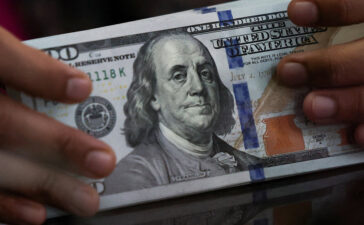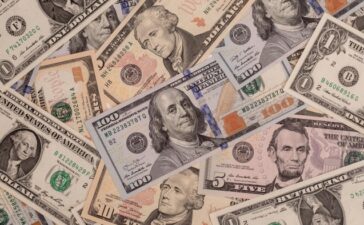Gold finished last week posting both its highest daily and weekly close, and this is significant for many reasons.
When we consider the notoriety of Gold’s two primary inverse correlations in the dollar and interest rates, it’s strength in the face of adversity is remarkable. With the yield on the 10 year treasury note still hovering above 4%, and the considerably above the significant 100 level, when we harp back to pre covid levels and observe the dollar being a lot weaker and interest rates a lot lower, Gold’s price being around 40% higher than that period of time is both extraordinary and alarming in equal measure.
Gold’s price reflects many things, but when it is elevated it is usually because it is climbing the wall of worry. Once it consistently closes above its all time high (achieved in the December 2023 buy stop hunting thin liquidity hours of the open), it will begin to garner mainstream attention. Now if this was a stock that had gained hype and the media began to broadcast to the public, it would almost certainly be time to sell it. Gold is the contrarian however because when the mainstream start to talk about it, it signifies much more than an overhyped stock; it will signify a palpable loss in confidence of fiat currency.
Since the Covid driven QE programme began across the globe (QE aka inflation) central banks, with the notable exception of the Federal Reserve, have embarked on a Gold buying spree. But make no mistake, this hasn’t been speculative – they saw this coming.
So what price would Gold have to rise to before a total loss of confidence in fiat paper IOU’s becomes widespread? The answer to this isn’t actually a price, it will be when institutions start buying it. This will signify a new paradigm shift back to sound money, and it is only a matter of time. The reason for this is simple, and it isn’t going away, nay only getting worse and that is debt, or more accurately the debt bubble.
Interest rates control the financial system and how cheap or expensive money is and when one considers how cheap money has been since rates tanked in 2008, cranking them to 5% from 0.5% is going to have a gravely negative affect on both balance sheets and liquidity. When fixed terms expire it makes it difficult to make ends meet when a business plan was written on credit based on 2008 – 2021 rates.
After the collapse of Silicon Valley Bank and a few others in March 2023, the Fed began a funding lifeline (Bank Term Funding Programme) which has been heavily correlated to the reverse repo market, and this lifeline of cash is due to expire on March 11th 2024 – one week away. The Fed is still allowing loans up until the deadline date, however any new applications are on newer rates. This could mean a 50 basis point jump on new loans.
Also to consider is since QE turned to QT in a drive to reduce the amount of available dollars in the system, it hasn’t served to decrease net debt despite a notable reduction in government spending.
So let’s look at some of these metrics. The US debt clock is dangerously close to breaching $35 Trillion and is currently generating $1m of interest roughly every 36 seconds. The US debt ceiling just gets kicked down the road each time it approaches and raised further with no consideration on how to start reducing obligations. The US Debt to GDP Ratio sits at 124%, more than double what it was at the turn of the century, so it isn’t like periods of austerity will solve the problem. Scarier version – China’s debt to GDP is twice that of the USA. These sort of stats must engender sleepless nights from the architects of such mismanagement in the world’s two largest economies.
So to the present day and on the back of the NY Bancorp shambles uncovered last week, certain parts of the banking sector once again look to be dancing on the trap door of insolvency driven by commercial real estate and mortgage interest that the smaller banks just haven’t been able to absorb. If this continues the Fed will have no choice but to open the taps of the printing press again and bail them out. While a Lehman Brothers style collapse cannot be ruled out, it may appear unlikely; however the longer the Fed stress tests the markets, the greater the propensity for the pain to be. Let’s not forget every single cycle in history, the Fed have been too late in raising rates, and too late in easing them. The word transitory will go down as the biggest mistake in Federal Reserve monetary policy history.
There is a solution to this problem and it falls into a revaluation event, or reset. It has long been touted that the futures markets are a way to manage the price of Gold, and if it wasn’t for the manipulation in the markets and the unnecessary Comex, Gold would have experienced price discovery and would be a considerably higher price than it is now. The sole reason it is managed is about continuing confidence in fiat. After all, you can print paper ad infinitum but you can’t print Gold. All currencies have a shelf life of around 50/60 years. We are at 53 years of designed debasement of paper money.
And that is very much the point. Gold is money, and its sensitivity to the dollar and perhaps the rising possibility of the greenback’s impending doom indicates both the loss of purchasing power and faith in the world’s reserve currency which appears to be close to the end of its tenure. When we consider the key trifecta of central bank ownership, the debt bubble and loss of confidence, the answer is shining inside of world vaults waiting to be revalued. Turning to 5,000 proven years of sound money is the only way.
















